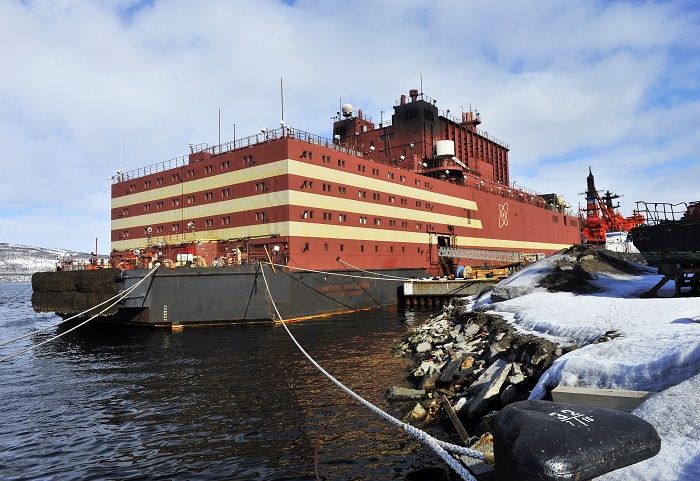The reactors aboard the Akademik Lomonosov, Russia’s floating nuclear power plant, have been brought to 100 percent capacity and is ready to be commissioned, Rosatom, the state nuclear corporation, announced on Wednesday.
The reactors aboard the Akademik Lomonosov, Russia’s floating nuclear power plant, have been brought to 100 percent capacity and is ready to be commissioned, Rosatom, the state nuclear corporation, announced on Wednesday.
According to a release from Andrei Petrov, the general director of the Rosenergoatom nuclear utility, which will run the Akademik Lomonosov, the plant’s two KLT-40 reactors were brought to full power on March 31. This process, said Petrov, “confirmed the operational stability of the main and auxiliary equipment of the plant, as well as the automatic process control systems”.
The announcement marks the end of ten months worth of tests on the nuclear barge, which were carried out at Atomflot, the Murmansk-based headquarters of Russia’s nuclear icebreaker fleet.
The news is bound to spark fresh concern about the controversial notion of floating two nuclear reactors on a 144 meter-long hull and attaching the whole apparatus to a land-based grid with power lines and mooring rope.
The environmental group Greenpeace has colorfully dubbed the Akademik Lomonosov a “nuclear Titanic” and a “Chernobyl on ice,” in reference to its eventual deployment in frozen Chukotka on the East Siberian Sea.
Bellona itself has long questioned the wisdom of the $480 million project as well, publishing a catalogue of its concerns in a report it released as long ago as 2011.
Despite these criticisms, Rosatom is now expected to tow the Akademik Lomonosov some 5,000 kilometers to the east of Murmansk via the Northern Sea Route to the port city of Pevek. It is expected to depart Atomflot in August or September, when ice conditions in the Arctic are more favorable for the massive tugboat operation.
The power produced by the Akademik Lomonosov will replace electricity supplied by the remote Bilibino nuclear power plant, which until the arrival of the floating plant has been known as the world’s northernmost commercial nuclear facility. Decommissioning operations at Bilibino have already begun, and are expected to finish by 2021.
Since the Akademik Lomonosov’s rocky – and often secretive – beginnings in 2006, Russia has attempted to sell the plant as a cure-all for energy droughts in the world’s more remote regions.
And while the plant has spawned a number of imitation blueprints in other countries such as China, the Akademik Lomonosov has so far failed to generate the rush of foreign orders that Rosatom said would justify its cost. Many Russian nuclear officials have anonymously conceded to the Russian press that the Akademik Lomonosov’s price tag is too high to bring the floating plant, as it is designed now, into serial production....MOREAnd the above referenced Rosenergoatom/Rosatom release, April 24:
World’s only floating nuclear power unit to begin commercial operations in Russia
